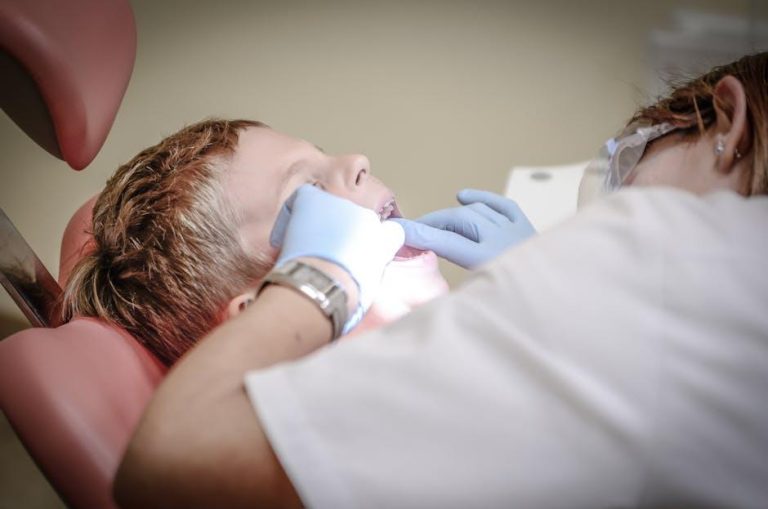
Opinion: State Must Preserve Dental Care for Vulnerable Children – San Diego Union-Tribune
Access to quality dental care plays a critical role in the overall health and well-being of children, especially those from vulnerable communities. Unfortunately, recent budget cuts and policy shifts threaten to erode essential dental services for California’s most at-risk youths. In this opinion piece, we explore why the state must prioritize and preserve dental care for vulnerable children—and the significant benefits of doing so.
The Importance of Preserving Dental Care for Vulnerable Children
Dental health is often overlooked, yet it’s a cornerstone of a child’s physical development, confidence, and educational success. Vulnerable populations—including low-income families, children on Medicaid, and those in underserved regions—face disproportionate barriers to accessing dental services. The implications of unaddressed oral health problems can be severe:
- Chronic pain and infections: Untreated cavities or gum disease can cause long-lasting pain and serious medical complications.
- Impact on nutrition: Dental issues hinder proper chewing, which affects absorption of vital nutrients.
- Missed school days: Children suffering from dental pain are more likely to miss school, impacting academic performance.
- Social and emotional effects: Poor dental health can contribute to low self-esteem, bullying, and social isolation.
By preserving and expanding dental care programs for vulnerable children, the state ensures healthier futures, reduces emergency room visits, and lowers long-term healthcare costs.
Current Challenges in California’s Children’s Dental Care
While California has made strides in expanding Medicaid (Medi-Cal) dental coverage for children, ongoing challenges threaten accessibility and quality:
- Provider shortages: Many dental practitioners are hesitant or unable to serve Medicaid patients due to low reimbursement rates.
- Geographic disparities: Rural and low-income urban areas often lack sufficient dental clinics and specialists.
- Administrative hurdles: Complex paperwork and coverage limitations delay or deny much-needed care.
- Budget cuts: Proposed reductions in state funding for Medi-Cal dental services put vulnerable children at greater risk.
Table: Key Challenges Affecting Vulnerable Children’s Dental Care in California
| Challenge | Description | Impact |
|---|---|---|
| Low Medicaid Reimbursement | Dentists receive lower payments for treating Medicaid patients | Fewer providers accept vulnerable children |
| Clinic Shortages | Insufficient number of dental clinics in underserved areas | Long travel and wait times for families |
| Policy Limitations | Restricted coverage for preventive and restorative services | Delayed or inadequate treatments |
| Funding Cuts | Reduced state allocations for children’s dental programs | Lower program availability and outreach |
Benefits of Maintaining Robust Dental Care for Vulnerable Children
Investing in comprehensive dental care for at-risk children yields measurable benefits across multiple domains:
- Health outcomes: Early intervention prevents decay progression and chronic diseases like diabetes and heart conditions linked to oral health.
- Cost savings: Preventive care reduces costly emergency dental visits and hospitalizations.
- Education and development: Healthy children perform better academically and socially.
- Equity promotion: Ensures all children receive fair access to essential services, regardless of socioeconomic status.
Practical Tips for Advocates and Families
Community advocates, parents, and caregivers can take proactive steps to support vulnerable children’s dental care:
- Know your local resources: Identify community clinics, school-based programs, and nonprofit organizations offering free or low-cost dental services.
- Engage with policymakers: Reach out to state legislators to express the importance of preserving Medi-Cal dental funding.
- Promote preventive care: Encourage daily brushing, flossing, and routine dental checkups for children.
- Use tele-dentistry options: Explore virtual consultations when in-person visits are difficult.
Case Study: Success Story from San Diego
In San Diego, a collaborative initiative between local health providers and schools illustrated the impact of sustained dental care support. The “Healthy Smiles San Diego” program provided free screenings and treatments to children in underserved neighborhoods. After one year:
- Over 1,200 children received dental exams and treatments.
- School absenteeism due to dental pain dropped by 15%.
- Parents reported higher satisfaction and confidence in accessing care.
This case highlights how strategic investment and community-focused programs can improve outcomes for vulnerable children.
Conclusion: A Call to Action for the State
Maintaining and enhancing dental care for vulnerable children in California isn’t just a health issue; it’s a moral and social imperative. The state must protect funding, incentivize providers, and expand outreach to ensure children from all backgrounds receive the dental care they need. With the right policies and community commitment, California can foster healthier generations equipped to thrive physically, emotionally, and academically.
It’s time for policymakers and stakeholders to act decisively—preserving dental care services for vulnerable children is an investment in our collective future.


